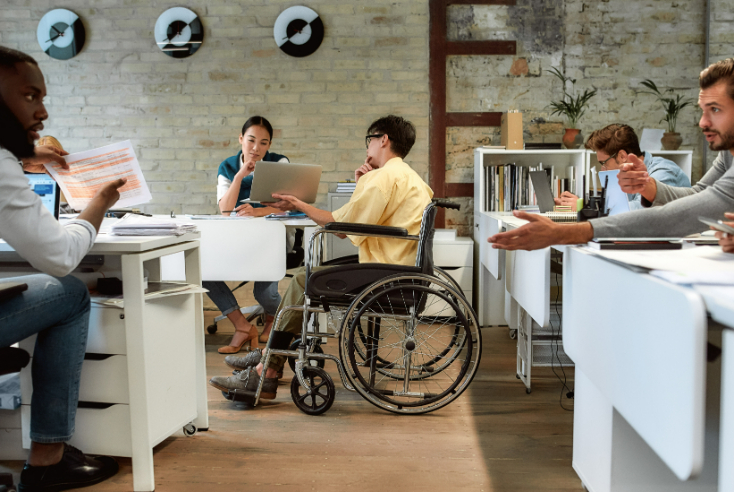Rowe: We need to design for disability inclusion

Opinion
One in five people in the UK are disabled: when is this industry going to wake up and join the handful of brands consciously including them?
Over 14 million people have a disability in the UK, a number that will only increase as our population ages, with more people surviving injury and illness, and as we get better at categorising disability.
Despite this enormous opportunity for brands, disabled people are historically stigmatised and chronically under-researched and represented – making them the obvious choice for our inaugural volume of The Real Britain Series; our proprietary research programme that focuses on delivering deeper understanding and applicable insight of marginalised, misunderstood and under-served communities.
We can design for disability inclusion along the marketing journey
We need to re-frame the way we look at disability by applying a strategic lens and viewing it as a design problem.
Designing for disability then becomes both valuable and addressable: a problem to be creatively solved, rather than something we avert our gaze from as a society and, in most cases, industry.
This is of course, with the notable exception of a few brands, who stoically shoulder the burden of an industry whose baseline tends to be “totally up for it… but not for this project”.
Well, “this project” must be the time, you risk getting left behind.
Are our brands and businesses getting anything right for disabled customers?
Our research found that 79% of respondents had experiences with major brands and businesses that they deemed inaccessible over the past 3 years, and, crucially, 91% of respondents said that if they had a negative experience with them in relation to their disability, they would actively avoid using them again.
We are already at a point where many brands will need to go the extra mile to prove they’re able to meet the needs of disabled consumers if they’re going to be given a second chance.
A case in point, and a statistic so disturbing you can’t unsee it: 42% of disabled travellers will starve and/or dehydrate themselves ahead of a long-haul flight because airline toilets are completely inaccessible, according to Rhiannon Parker, chief innovation officer at The Valuable 500.
What can we do to support brands?
Step 1: Look inwards
A crucial first step in the journey towards disability inclusion has to be looking inward and assessing internal representation and engagement with disabled staff as well as consumers.
There will, without doubt, be people with invisible disabilities in our organisations who have chosen to not declare them through fear of exclusion and judgement.
Change starts at home, and we must encourage people to speak up and request reasonable adjustments and normalise disability representation.
We need to ask ourselves, too, “are we calling out ableism when we see it?”
Step 2: Plan for conscious inclusion when creating communications strategies
Our research found that only one in five of experiences with media were found to be fully accessible by our disabled respondents: from finding content (one third of programming wouldn’t work with assistive technology) to consuming content (62% had issues with accessibility of formats) and to engage with it (45% felt disability representation within advertising was completely invisible).
There are, though, some simple steps we can take to start addressing these issues:
1. Consider the prevalence of disability within your existing target audience (agencies with access to standard industry surveys should be able to find this easily).
2. Establish how disability may change media consumption across channels.
3. Ideally speak directly to disabled people within your audience segments to understand how your brands are consumed and perceived.
4. Ensure formats are made accessible through captions, alt text and image ID for example.
5. Use disabled representation within content as standard, including varied disability and intersectional characteristics.
6. Consider how your ‘creativity and innovation’ pots – so commonly dispatched on standard partnerships – could be used specifically to serve and engage disabled groups. Go above and beyond.
7. Make sure you measure your campaigns against disabled audiences as well as non-disabled.
In summary, we need to challenge our plans along every stage: have we really gotten a handle on how our brands will show up within them?
And, importantly, how can we be better allies to change the reality for disabled people now and those who will acquire a disability in the future? After all, it’s highly likely that this will be a reality for us or a loved one in the future.
 Laura Rowe is head of research at OMD UK.
Laura Rowe is head of research at OMD UK.




